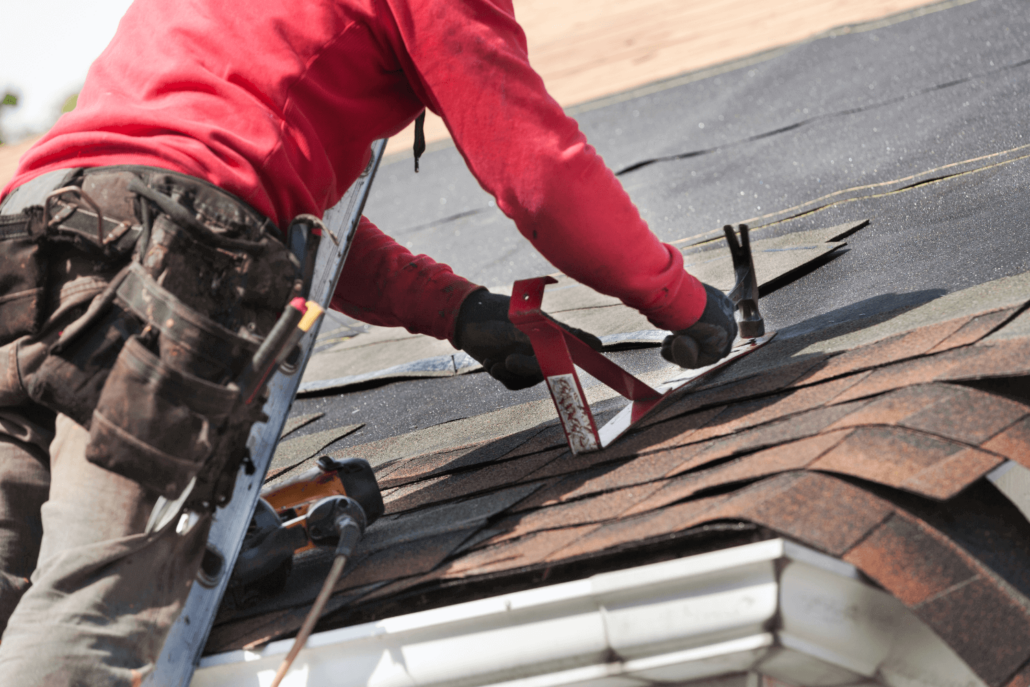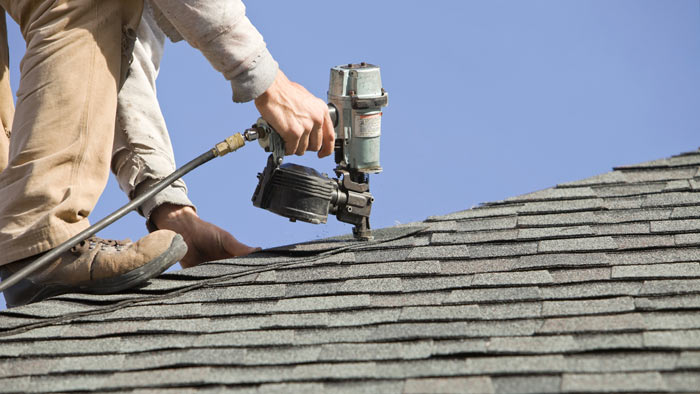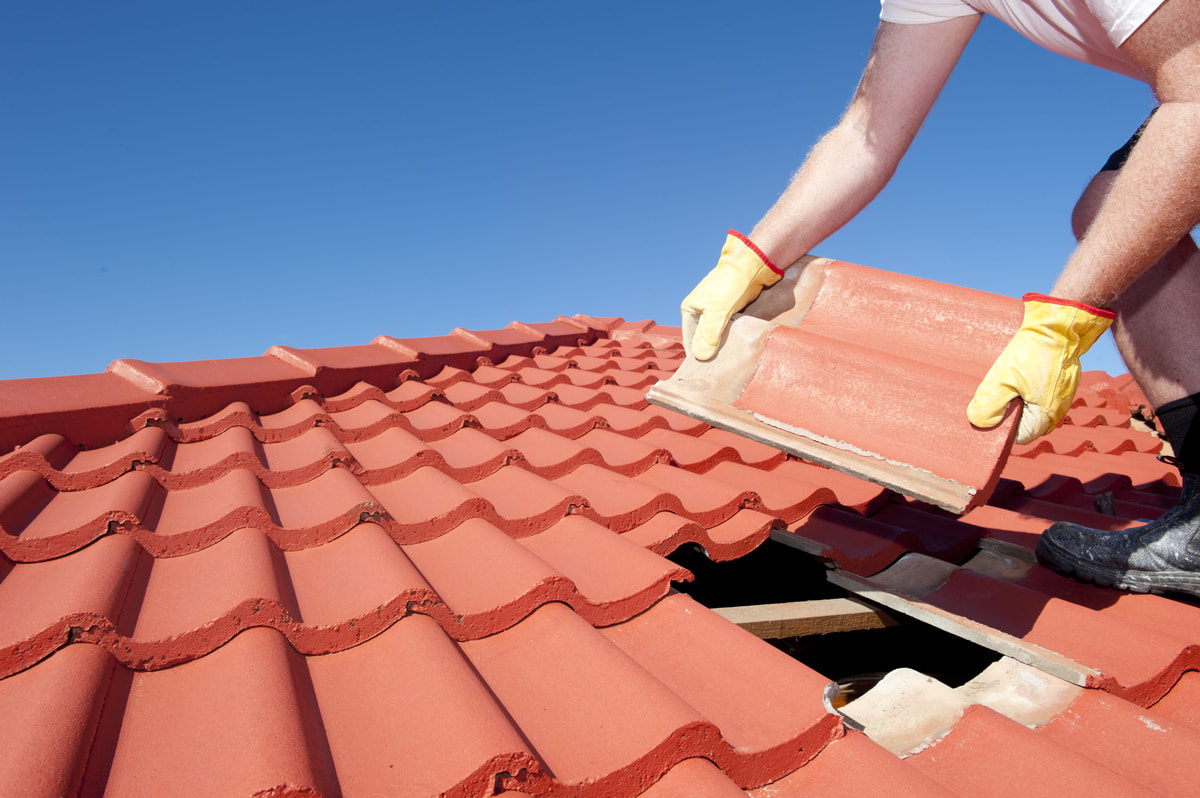Preventative Roofing Maintenance: Tips to Prevent Costly Fixings
To stay clear of costly fixings, you should check your roof consistently for missing or harmed roof shingles, tidy your downspouts and rain gutters to protect against clogs, and trim overhanging branches. These easy steps can significantly prolong your roofing system's lifespan, and there's lots extra you can do to shield your investment.
Inspect Your Roof Covering Frequently
When you examine your roofing regularly, you can capture potential issues prior to they become expensive repair services. Begin by looking for missing out on, fractured, or curling tiles; these are indications that your roof covering may require focus. Seek any continue here type of noticeable wear around chimneys, vents, and flashing, as these areas are often vulnerable to leaks. Take notice of any sagging or irregular areas, which might suggest architectural problems.
After a storm, it's crucial to analyze your roofing system for damage triggered by high winds or hefty particles. Don't fail to remember to check the bottom of your roof covering in the attic room; look for signs of wetness or mold, which can indicate leakages.
Tidy Seamless Gutters and Downspouts
Routine roof covering examinations naturally result in a crucial task: cleaning your downspouts and gutters. Clogged rain gutters can cause water to support, resulting in possible roofing leakages and structural damage. To avoid these concerns, make it a practice to inspect your seamless gutters a minimum of twice a year, particularly after hefty storms or fall when leaves collect.
When you cleanse them, begin by eliminating particles like fallen leaves, branches, and dust. You can make use of an inside story or your hands, yet bear in mind to put on gloves. After clearing the debris, flush the seamless gutters with water to assure proper water drainage. Don't fail to remember to inspect downspouts for obstructions. You may need to use a plumbing technician's snake or a tube to remove the blockage. if water isn't streaming openly.
Address Overhanging Branches
Overhanging branches can pose a significant hazard to your roof, so it's crucial to cut them on a regular basis. Not just can they trigger damage throughout storms, yet they can likewise welcome parasites. Make it a routine to evaluate for any indications of wear or damage to keep your roof covering in leading form.
Trim On A Regular Basis
One of the most crucial steps in roof upkeep is to trim those branches that hang as well close to your home. Regularly cutting back these branches keeps your roof clear and decreases the danger of leakages and bugs. You don't need to tackle this task alone; working with a specialist arborist can ensure secure and effective trimming, protecting your roofing system and improving your home's overall look.
Examine for Damages
 roof repair
roof repair
Look for Harmed or Missing Out On Roof Shingles
It's vital to check your shingles on a regular basis for any type of damages or missing items. If you find any kind of problems, change missing shingles quickly to stop further problems. Maintain an eye on how the weather influences your roofing system, as harsh conditions can lead to put on and tear.
Examine Routinely for Damage
Frequently checking your roof for damages is vital to maintaining its integrity and prolonging its lifespan. Try to find indications of wear, such as cracked, crinkled, or missing roof shingles. If left unaddressed, also tiny problems can lead to substantial issues. Pay interest to locations where particles gathers, as this can trap dampness and increase degeneration. Check your roofing after strong winds or hefty storms, as these conditions can displace or damage tiles. Don't forget to examine the flashing around vents and chimneys; if it's compromised, it can lead to leaks. By making roofing system examinations a normal part of your maintenance regimen, you can capture troubles early and save yourself from costly fixings down the line. Your roofing system will thank you!
Replace Missing Tiles Quickly
After looking for any damage throughout your evaluations, you might locate that some tiles are missing or jeopardized. Don't wait to change them; timely action can prevent further problems. Missing shingles subject your roofing system to wetness, which can bring about leaks and more considerable damage with time.
Make sure to use tiles that match your roof's color and design for a smooth look. Keeping your roof in top shape is essential for safeguarding your home and staying clear of expensive repairs down the line.
Screen Weather Effect Often
As tornados roll through your area, keeping a close eye on your roofing ends up being essential. After each tornado, take a minute to check your roofing system for any kind of damaged or missing out on tiles. Try to find granules in your gutters, which can show deterioration. If you spot any kind of shingles that are split, curled, or entirely gone, deal with the issue quickly to avoid water leaks and additional damage. Climbing onto the roof covering isn't constantly essential; you can usually spot troubles from the ground with binoculars. Don't neglect to look for debris accumulation, as it can trap dampness and lead to rot. Routine tracking aids you catch small issues before they intensify, saving you money and time over time.
 roof repair
roof repairGuarantee Appropriate Ventilation
While lots of house owners focus on the outside and architectural aspects of their roofs, guaranteeing correct air flow is necessary for keeping its long life and effectiveness. Poor air flow can lead to heat build-up and dampness accumulation, which can trigger damage with time. See to it your attic has sufficient airflow by mounting soffit vents and ridge vents. This setup enables a continual circulation of fresh air, aiding to manage temperature and decrease moisture levels.
Appropriate air flow not just improves your roofing system's lifespan but additionally improves power performance, keeping your home comfy year-round. By taking these steps, you're investing in your roof's wellness and preventing pricey repair work down the line.
Search for Indicators of Leakages
Appropriate ventilation assists prevent wetness build-up, yet even with excellent airflow, it's important to keep an eye out for indications of leaks. Start by examining your ceilings and wall surfaces for water discolorations or staining, which can indicate a leak over.
Outdoors, examine your roofing for missing tiles, cracks, or damaged blinking, as these susceptabilities can lead to leaks. Regularly checking for these indicators will certainly aid keep your roof's honesty and keep your home dry and secure.
Schedule Expert Evaluations
 roof repair
roof repair
Aim for a minimum of one inspection annually, ideally in the spring or fall, to straighten with seasonal modifications. During these examinations, specialists can identify prospective risks like missing tiles, compromised flashing, or indicators of mold and mildew. They'll also inspect for debris accumulation that could cause water merging.
Don't wait for noticeable signs of trouble; taking proactive actions can expand your roofing system's life-span. Investing in routine evaluations not only safeguards your home however likewise offers you assurance knowing your roofing system is in good problem.
Often Asked Questions
How Frequently Should I Carry Out Roof Inspections?
You need to perform roofing system evaluations a minimum of twice a year, preferably in spring and autumn. Regular checks help you detect prospective issues early, conserving you time and money on expensive repairs down the line.
What Tools Do I Need for Roofing System Maintenance?
For roofing system maintenance, you'll require a strong ladder, safety belt, roofing nails, a hammer, an energy knife, caulk, a trowel, and a flashlight. Don't forget gloves and safety goggles to keep yourself secured!
Can I Clean My Roofing Myself?
Yes, you can cleanse your roofing yourself. Simply make sure you have the right devices, use security equipment, and comply with correct techniques. It is very important to be mindful to prevent crashes and guarantee reliable cleansing.
Exactly How Can I Determine Roofing Leakages Early?
To identify roofing system leaks early, you'll desire to evaluate your roofing regularly. Look for water stains, mold and mildew, or missing tiles. Focus after heavy rainfall, and do not think twice to inspect the attic room for damp places.
What Are the Indicators I Need a New Roofing System?
If you discover curled or missing roof shingles, persistent leaks, or water discolorations on ceilings,You'll require a new roofing. Additionally, if your roof's age goes beyond 20 years, it's smart to consider replacement quicker rather than later.
To avoid costly fixings, you need to examine your roofing system consistently for missing out on or harmed roof shingles, tidy your seamless gutters and downspouts to protect against clogs, and trim overhanging branches. Missing roof shingles subject your roofing to dampness, which can lead to leakages and more considerable damages over time.
After each storm, take a minute to inspect your roof for any kind of harmed or missing shingles.Outdoors, examine your roofing for missing out on tiles, cracks, or damaged blinking, as these susceptabilities can lead to leakages.To determine roofing system leakages early, you'll desire to inspect your roof covering on a regular basis.